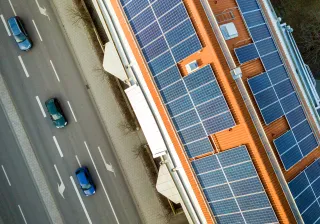Finland’s population projection for 2045 has fluctuated wildly over the past 15 years. However, the need for new housing is not fluctuating in line with demographic trends. Why not?
In the 2009 and 2012 population projections, Finland's population was still expected to grow to more than six million by 2045. This increase was based on a projection of self-sufficiency, for example through longer life expectancy for men. At those times, the level of net migration was 15,000 people.
Ten years on, the outlook was different. The self-sufficiency projection showed a decline in the birthrate and the population in 2045 was projected to be only 5.5 million. Population growth slowed, but more crucial for housing production was the fact that the number of adults continued to grow. Therefore, the housing production need for the 2020–2040 period was estimated to be 31,000–35,000 dwellings per year.
The upper limit of the housing production need was based on the assumption of an increase in single occupancy, which was seen after students moved within the scope of the general housing allowance in 2017. Demand increased and supply was boosted by zero interest rates on loans. In 2021, a record number of dwellings was started in Finland at around 46,000 units. The all-time record for housing production dates back to 1974, when more than 70,000 dwellings were completed.
New projections: changing demographics, no change in the housing production need
Statistics Finland's new official population projection, which extends to 2045, targets a population of six million. The Ministry of Finance is using a lower projection of around 5.8 million. The difference from Statistics Finland's projection comes from net migration: will net migration to Finland every year be equal to the population of Iisalmi (just over 20,000) or that of Kirkkonummi (just over 40,000)?
These alternative projections result in a housing production need of between 31,000 and 35,800 dwellings per year over the next 20 years. Despite the different expectations of population growth, the need for new housing is the same as for the 2019 population projection.
The housing production need is therefore not directly related to demographic trends. The demand for housing is influenced by the change in the number of adults, the composition of communities and the number of single people living alone, as well as by where housing is needed.
Supply, on the other hand, is influenced by the existing housing stock, the number of buildings that are being retired and the renewal of the building stock, for example as a result of reconstruction after demolition. In the 2019-based forecast, the need was concentrated in large cities but, in the new projection, residents have also been allocated outside these cities.
Population projections show how the population will develop if recent population trends continue unchanged for the next few decades. Housing projections follow partly the same principle, but also take into account identified phenomena such as increases in single occupancy and single-parent families. Housing projections focus on the number of dwellings needed for permanent housing.
Read the latest housing projection by the Finance Finland, the Association of Finnish Municipalities, Municipality Finance, the Confederation of Finnish Construction Industries RT and the Ministry of the Environment, which VTT has produced, at https://doi.org/10.32040/2242-122X.2025.T435





